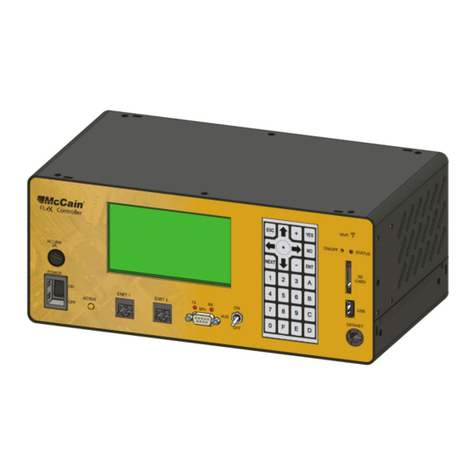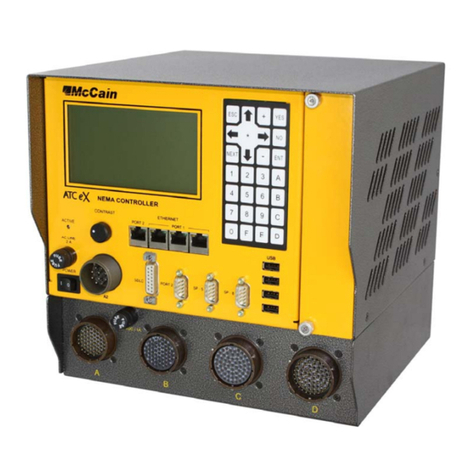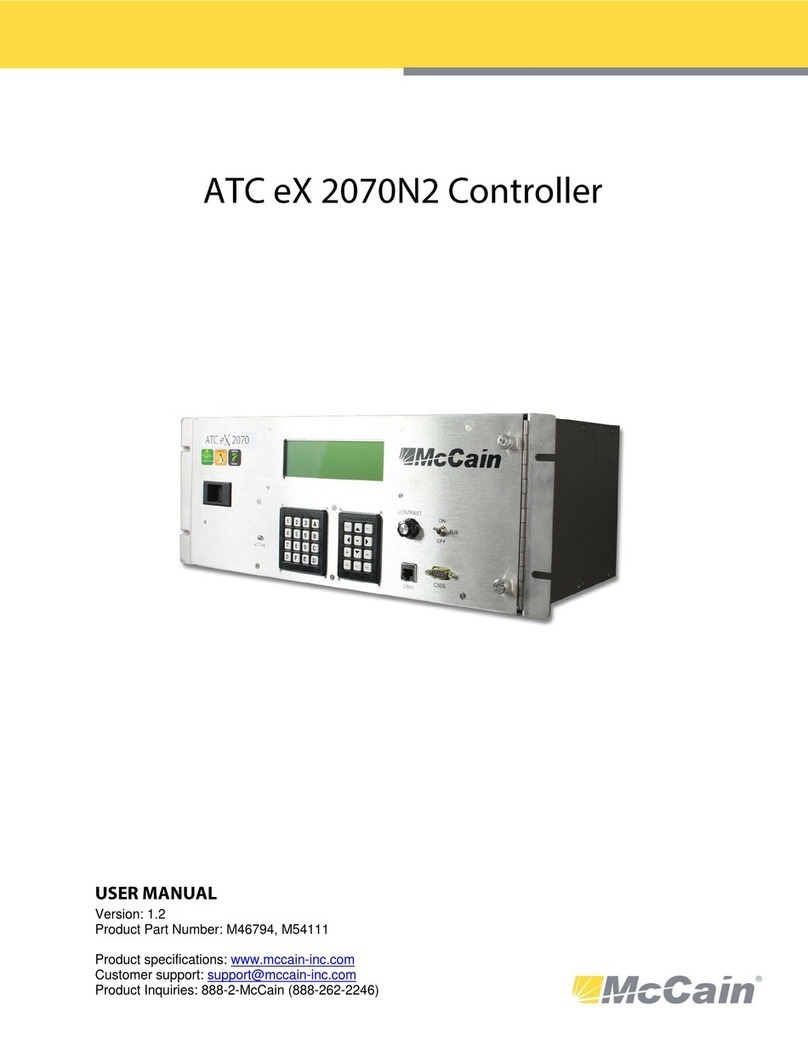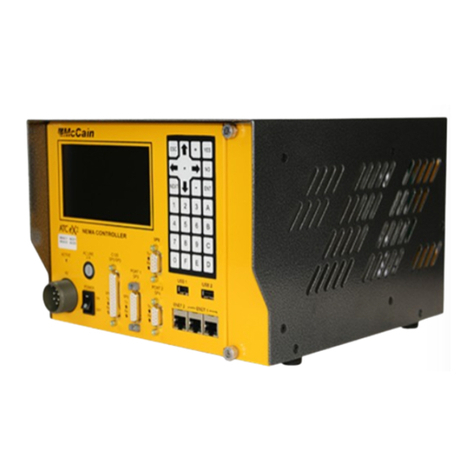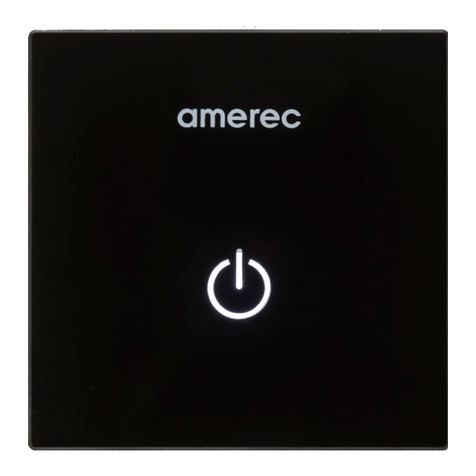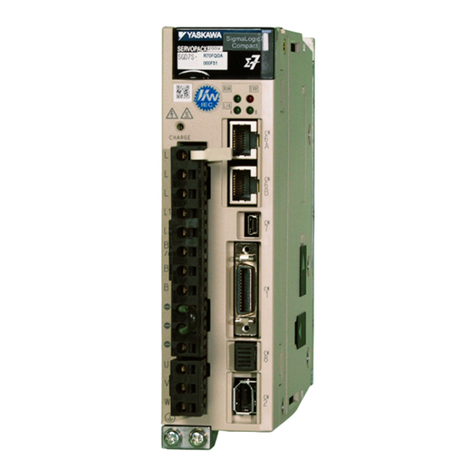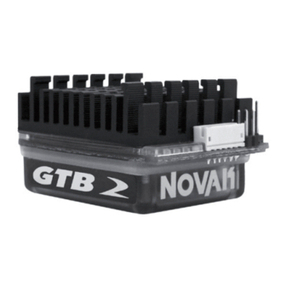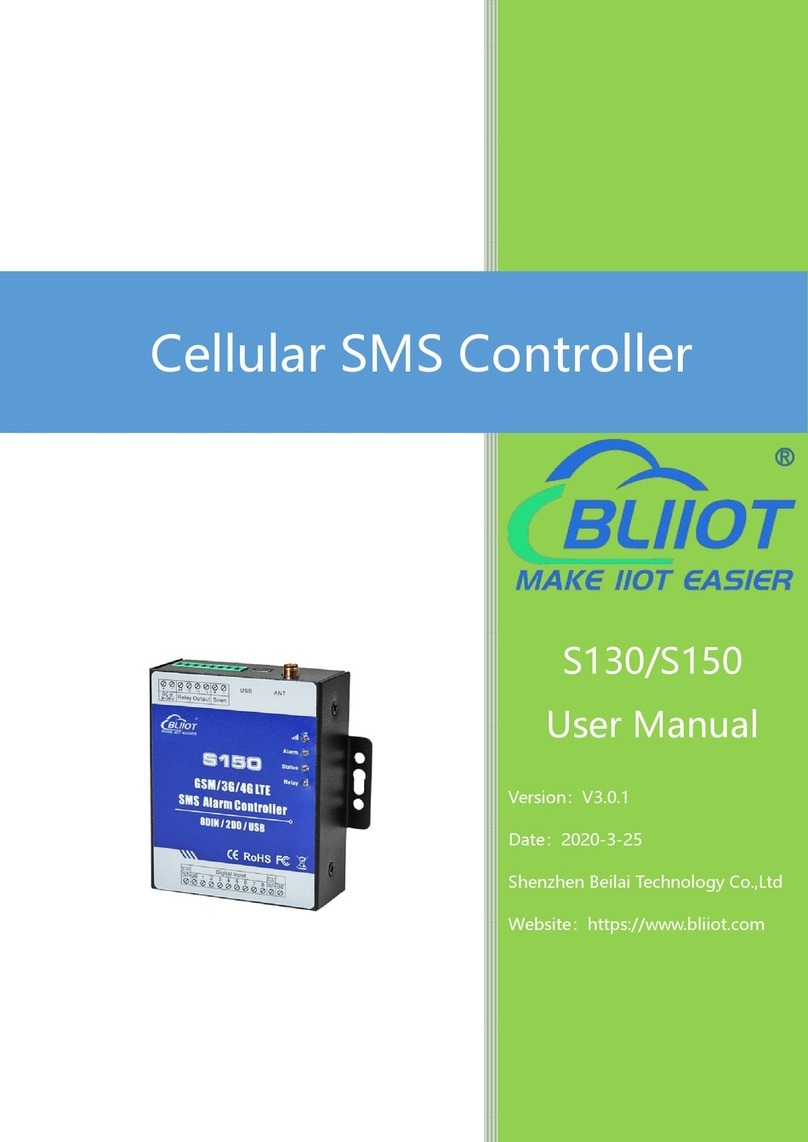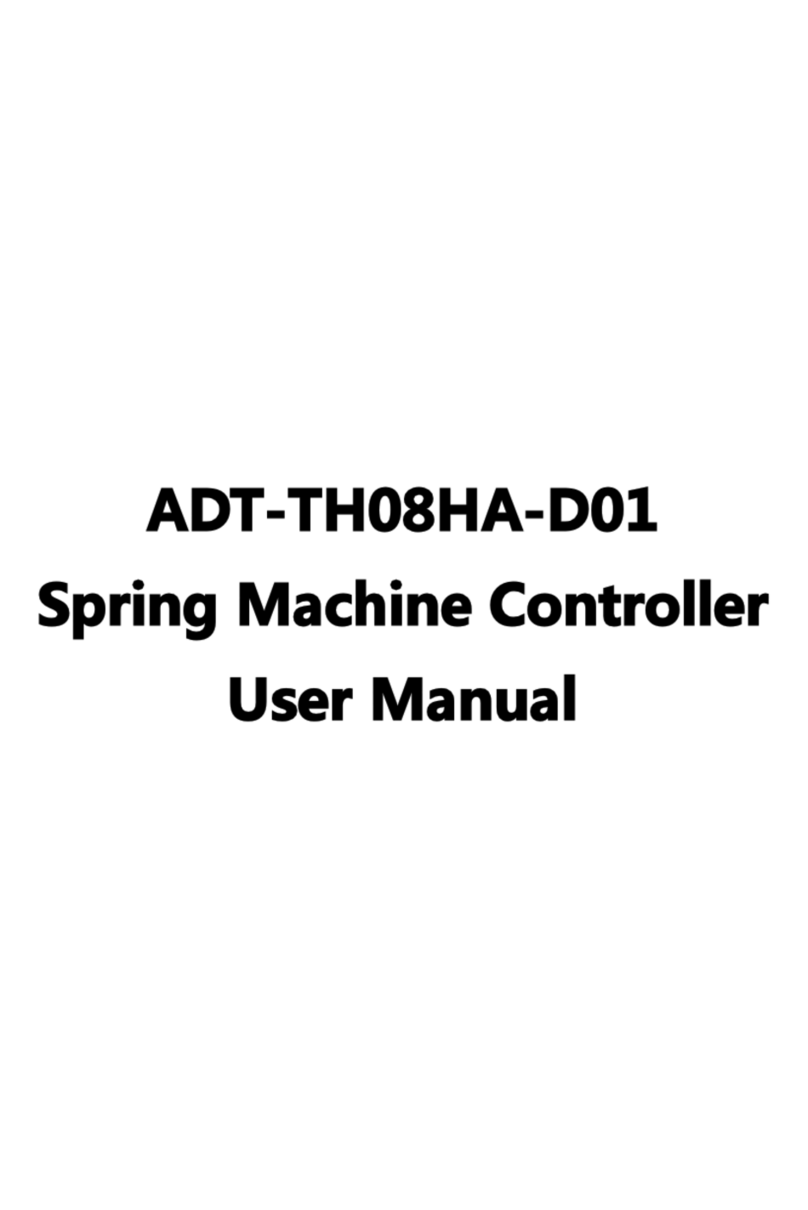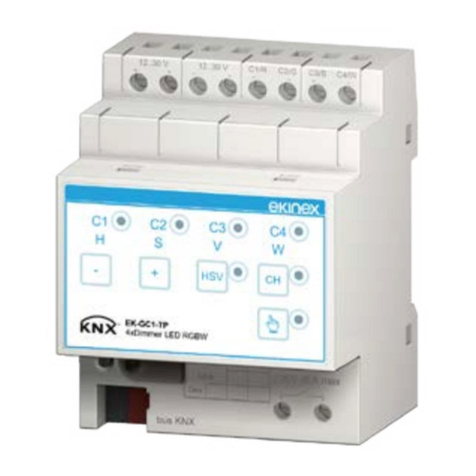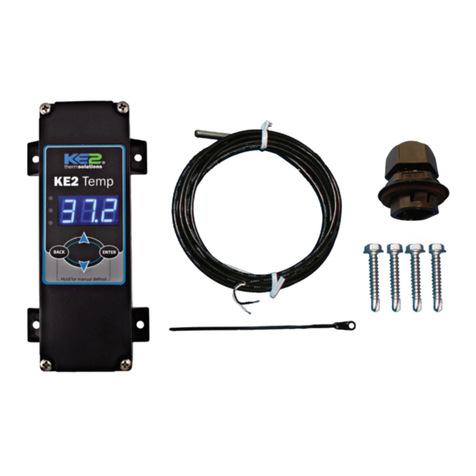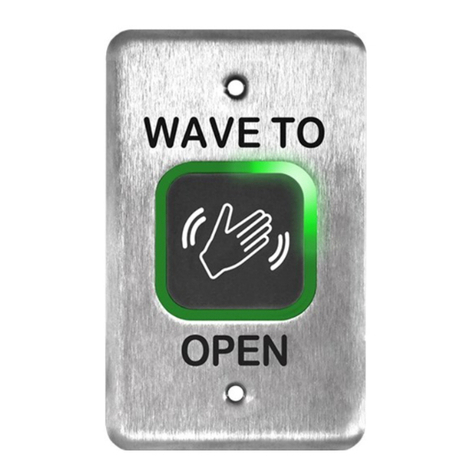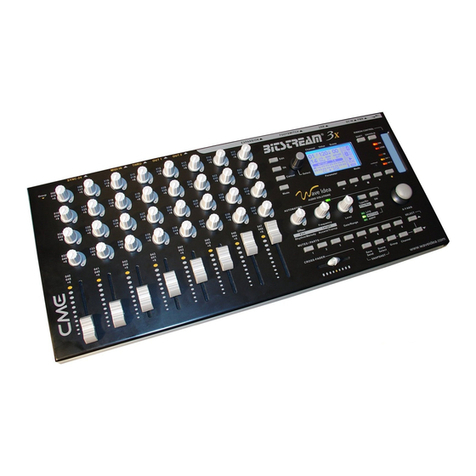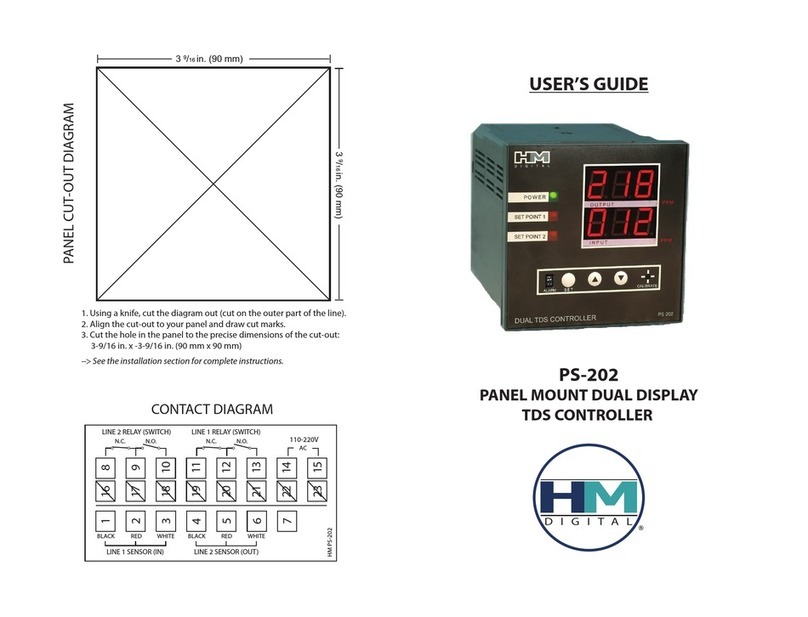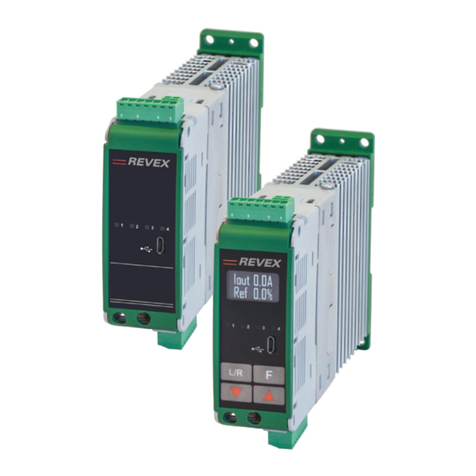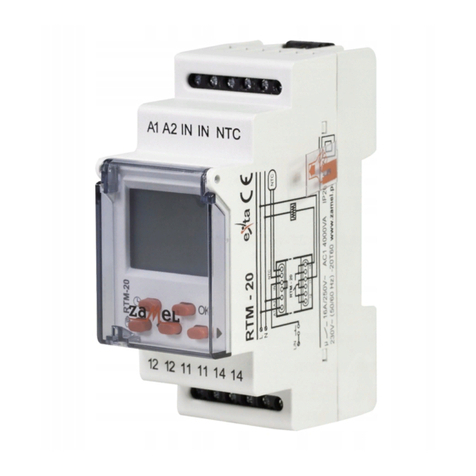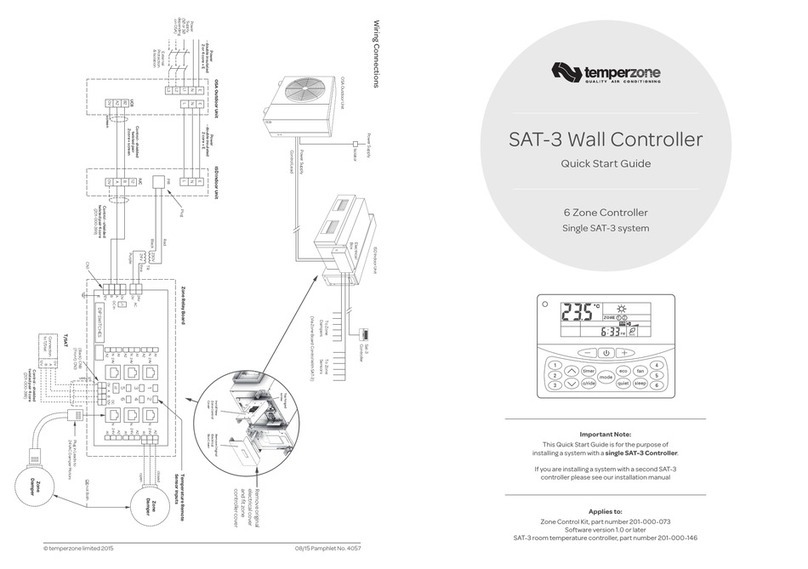McCain 2070LX User manual

This page was intentionally left blank

Version
REVISIONS
Rev
By
Date
Comments
1.0
A. Lozoya
Oct/29/2015
Initial Release

DISCLAIMERS
User Responsibility
This document is subject to revision. Users of this document are responsible for verifying the current
version status before using this document and or discarding all older revisions.
McCain Inc. shall not be liable for errors contained herein or for incidental or consequential damages in
connection with furnishing, performance or use of this material. MCCAIN MAKES NO WARRANTY OF
ANY KIND WITH REGARD TO THIS MATERIAL, INCLUDING, BUT NOT LIMITED TO, THE IMPLIED
WARRANTIES OF MERCHANTABILITY AND FITNESS FOR A PARTICULAR PURPOSE.
This document contains proprietary and confidential information and is the sole property of McCain. No
part of this document may be photo copied, reproduced or translated to another language without the
prior written consent of McCain.
This manual is copyright © 2015 by McCain Inc. All rights reserved.
McCain Inc. // 2365 Oak Ridge Way // Vista, CA 92081
PH 760-727-8100
Product Specifications: www.mccain-inc.com
Product Inquiries: 888-2-McCain (888-262-2246)

2070LX Controller –User Manual i
Version 1.0
Table of Contents
12070LX CONTROLLER.................................................................................................................... 1
1.1 Product description......................................................................................................................................1
1.2 Benefits ........................................................................................................................................................1
1.3 Configuration ...............................................................................................................................................1
1.4 Standard features.........................................................................................................................................4
1.5 Interfaces .....................................................................................................................................................4
22070-1C CPU MODULE.................................................................................................................. 5
2.1 General description......................................................................................................................................5
2.2 Standard features.........................................................................................................................................6
2.3 Communication interfaces’ description.......................................................................................................6
2.4 Theory of operation ...................................................................................................................................11
2.4.1 Host board .............................................................................................................................................11
2.4.1.1 The DIN-96 Connector...................................................................................................................11
2.4.1.2 C13S Connector circuitry...............................................................................................................11
2.4.1.3 Control signals circuit....................................................................................................................12
2.4.1.4 Receptacles for engine board installation.....................................................................................12
2.4.1.5 RS-485 line driver/receivers circuitry............................................................................................12
2.4.1.6 Back up circuitry............................................................................................................................13
2.4.1.7 Ethernet switches..........................................................................................................................13
2.4.1.8 USB Hub.........................................................................................................................................14
2.4.1.9 Datakey circuitry ...........................................................................................................................15
2.4.1.10 ACTIVE LED circuit .........................................................................................................................15
2.4.1.11 A2-A3 installation detection circuitry............................................................................................15
2.4.1.12 SD CARD Circuit .............................................................................................................................16
2.4.2 Engine Board..........................................................................................................................................16
2.4.2.1 Microprocessor .............................................................................................................................16
2.4.2.2 Memory.........................................................................................................................................17
2.4.2.3 Communications ...........................................................................................................................17
2.4.2.4 Reset management .......................................................................................................................18
2.4.2.5 Support circuitry............................................................................................................................18
2.4.2.6 Reset Circuits.................................................................................................................................21
2.5 2070LX Hostboard and Engine Block Diagrams..........................................................................................25
2.6 Connectors’ Pin Out ...................................................................................................................................29

ii
2.7 2070-1C module dimensions......................................................................................................................32
2.8 Adjustment.................................................................................................................................................32
2.9 Installing the 2070-1C CPU Module ...........................................................................................................32
32070-2E+ FIELD I/O MODULE ...................................................................................................... 33
3.1 General description....................................................................................................................................33
3.2 Theory of operation ...................................................................................................................................34
3.3 2070-2E+ Block Diagram ............................................................................................................................40
3.4 Connectors’ Pin Out ...................................................................................................................................42
3.5 2070-2E+ module dimensions....................................................................................................................44
3.6 Installing the 2070-2E+ Module .................................................................................................................44
42070LX MODULE, FRONT PANEL ASSEMBLY................................................................................ 45
4.1 General description....................................................................................................................................45
4.2 Theory of operation ...................................................................................................................................46
4.3 2070LX Block Diagram................................................................................................................................48
4.4 Connectors’ Pin Out ...................................................................................................................................49
4.5 2070LX module dimensions .......................................................................................................................49
4.6 Adjustment.................................................................................................................................................50
4.7 Installing the 2070LX..................................................................................................................................50
52070-4A POWER SUPPLY MODULE ............................................................................................. 51
5.1 General description....................................................................................................................................51
5.2 Theory of operation ...................................................................................................................................52
5.3 2070-4A Block Diagram..............................................................................................................................57
5.4 PS1 and PS2 Connectors’ Pin Out...............................................................................................................58
5.5 2070-4A module dimensions .....................................................................................................................59
5.6 Adjustment.................................................................................................................................................59
5.7 Installing the 2070-4A module...................................................................................................................60
6CHASSIS UNIT ............................................................................................................................. 61
6.1 General description....................................................................................................................................61
6.2Serial Motherboard....................................................................................................................................63
6.2.1 Theory of operation...............................................................................................................................63
6.3 2070 Serial Motherboard Block Diagram...................................................................................................64
6.4 Connectors’ Pin Out ...................................................................................................................................65
7GENERAL SPECIFICATIONS .......................................................................................................... 71

2070LX Controller –User Manual iii
Version 1.0
Table of Figures
Figure 1: 2070LX Controller, Front and Rear Views.....................................................................................2
Figure 2: 2070LX Controller System Configuration......................................................................................3
Figure 3: 2070-1C CPU Module....................................................................................................................5
Figure 4: 2070-1C CPU dimensions...........................................................................................................32
Figure 5: 2070-2E+ Module ........................................................................................................................33
Figure 6: 2070-2E+ Dimensions .................................................................................................................44
Figure 7: 2070LX Module............................................................................................................................45
Figure 8: 2070LX Dimensions.....................................................................................................................49
Figure 9: Power Supply 2070-4A................................................................................................................51
Figure 10: 2070-4A Dimensions .................................................................................................................59
Figure 11: 2070LX Chassis unit..................................................................................................................61
Figure 12: Front and rear view 2070LX Chassis ........................................................................................62
Figure 13: 2070 Serial motherboard...........................................................................................................63

iv
This page was intentionally left blank

2070LX Controller –User Manual 1
Version 1.0
1 2070LX CONTROLLER
1.1 PRODUCT DESCRIPTION
The 2070LX Controller is a ruggedized, multitasking field processor and communications system that is
easily configurable for a variety of traffic management applications in either a rack or shelf mount
configuration.
The 2070LX Controller has a general purpose nature, open architecture and modular design, and its
functionality depends on the software loaded into the controller and the modules included.
McCain’s 2070LX Controller, is designed in full compliance with Caltrans Transportation Electrical
Equipment Specifications (TEES) 2009.
The McCain’s 2070LX Controller’s primary function is intersection control but can be used for a multitude
of applications based on the controller’s software.
The controller’s Linux operating system provides a robust, flexible and expandable platform that is
compatible with multi-vendor application control software.
1.2 BENEFITS
Open Architecture insures compatibility with off-the-shelf products Linux Software –Standard
Software Modules from Multiple Sources.
Flexible Design to Meet Specific User Needs.
The controller’s multitasking operating system (OS) supports a variety of applications.
Easily upgrades current intersection hardware.
Multitasking –Each 2070LX Unit Can Control Multiple Applications.
Physically Compatible with Model 170&170E Controllers & Facilities.
1.3 CONFIGURATION
This controller configuration is constructed as follows (See Figure 1):
2070E Chassis unit.
2070-1C CPU module.
2070-2E+ Field I/O module.
2070LX Front Panel module.
2070-4A Power Supply module.
Blank filler plates: There are five 2X and one 1X.

2
FRONT VIEW
REAR VIEW
Figure 1: 2070LX Controller, Front and Rear Views

2070LX Controller –User Manual 3
Version 1.0
Figure 2: 2070LX Controller System Configuration
SERIAL MOTHERBOARD
2070-2E+
FIELD I/O
2070-1C
CPU
2070LX FRONT PANEL
SP1
SP2
SP3
SP4
SP5
SP6
ETHERNET
LINESYNC
POWERUP
POWERDN
CPURESET
FRONT PANEL
CONTROLLER
C50S
C14S
C13S
C1
S
C11S
C12
S
SP8
ETHERNET
PORT1
PORT 2
LINESYNC
POWERUP
NRESET
I/O
2070-4A
POWER
SUPPLY
LINESYNC
POWERUP
NRESET
SP3 AND SP5
A2
A3
A5
COMM
COMM
A1

4
1.4 STANDARD FEATURES
Operating system
Linux, Version 2.6.22
Modules (standard, included)
2070-1C CPU Module
2070-2E+ Field I/O module
2070LX Front Panel Module
2070-4A Power Supply
Microprocessors
MPC8360E Freescale PowerQUICC II Pro microprocessor
Backup real-time clock (RTC)
Maxim DS1390
Memory
256 MB DRAM
16 MB Flash Memory NOR
256 MB Flash Memory NAND
2 MB non-volatile SRAM
Applicable standards
Meets or exceeds Caltrans TEES 2009 standard
1.5 INTERFACES
Communication interfaces
Up to five SDLC ports
Up to seven asynchronous ports
ENET 1: 100 Base-T Ethernet switch, 1 uplink and 3 additional ports
ENET 2: 100 Base-T Ethernet port dedicated for local communications (i.e. laptop or similar)
One USB port
Front panel interface
Display: 8 lines x 40 characters
Keyboards: 3 x 4 navigation and 4 x 4 data entry keypads
Cabinet interfaces
C11S Connector
C12S Connector
C1S Connector

2070LX Controller –User Manual 5
Version 1.0
2 2070-1C CPU MODULE
2.1 GENERAL DESCRIPTION
The 2070-1C CPU Module is the brain of the controller. It includes the microprocessor computer chip,
memory, serial communications and operating system. The 2070-1C is a module meeting the 2X WIDE
board requirements. The module is furnished normally resident in the Slot A5 of Motherboard.
The 2070-1C Assembly consists of a Printed Circuit Board Assembly and a front plate. The front plate is
attached to the board by using two screws and two washers.
The 2070-1C features a wide variety of communication options, such as serial and Ethernet for
connectivity in any kind of environment. Quick data transfers, firmware upgrades, and log retrievals can
be done via USB.
The 2070-1C microprocessor is a Freescale MPC8360.
It consists of a Host Board, an Engine Board and a faceplate (plus brackets, standoffs and hardware to fix
them to the host board).
Figure 3: 2070-1C CPU Module

6
2.2 STANDARD FEATURES
Operating System: Linux, Version 2.6.22
Processor: MPC8360E Freescale PowerQUICC II Pro communications processor, 32 Bit, CPU32
Instruction Set.
Memory:
o256 MB DRAM
o16 MB Flash Memory NOR
o256 MB Flash Memory NAND
o2 MB non-volatile SRAM
Communications:
oUp to five SDLC ports
oUp to seven asynchronous ports
oENET 1: 100 Base-T Ethernet switch, 1 uplink and 3 additional ports
oENET 2: 100 Base-T Ethernet port dedicated for local communications (i.e. laptop or
similar)
oOne USB port
Serial Buses: EIA RS-485 to Motherboard (6 COMM + modem control).
Time-of-day clock.
Interrupts.
CPU Reset.
CPU activity LED.
Tick Timer.
2.3 COMMUNICATION INTERFACES’ DESCRIPTION
Serial Port 1 (SP-1):
Usage: This is a general purpose port.
Location: available at the DIN-96 connector.
Operating modes: Asynchronous, Synchronous, HDLC, SDLC.
Async rates (bps): 1200, 2400, 4800, 9600, 19.2k, 38.4k / Optional: 57.6k, 115.2k.
Sync rates (bps): 19.2k, 38.4k, 57.6k, 76.8k, and 153.6k.
Interface pins:
SP1_TXD: Transmit Data (O)
SP1_RXD: Receive Data (I)

2070LX Controller –User Manual 7
Version 1.0
SP1_RTS: Request To Send (O)
SP1_CTS: Clear To Send (I)
SP1_CD: Carrier Detect (I)
SP1_TXC_INT: Transmit Clock Internal (O)
SP1_TXC_EXT: Transmit Clock External (I)
SP1_RXC_EXT: Receive Clock External (I)
Serial Port 2 (SP-2):
Usage: This is a general purpose port.
Location: available at the DIN-96 connector.
Operating modes: Asynchronous, Synchronous, HDLC, SDLC.
Async rates (bps): 1200, 2400, 4800, 9600, 19.2k, 38.4k / Optional: 57.6k, 115.2k.
Sync rates (bps): 19.2k, 38.4k, 57.6k, 76.8k, and 153.6k.
Interface pins: SP2_TXD: Transmit Data (O)
SP2_RXD: Receive Data (I)
SP2_RTS: Request To Send (O)
SP2_CTS: Clear To Send (I)
SP2_CD: Carrier Detect (I)
SP2_TXC_INT: Transmit Clock Internal (O)
SP2_TXC_EXT: Transmit Clock External (I)
SP2_RXC_EXT: Receive Clock External (I)
Serial Port 3 (SP-3):
Usage: To handle in-cabinet devices.
Location: available at the DIN-96 connector.
Operating modes: Asynchronous, Synchronous, HDLC, SDLC.
Async rates (bps): 1200, 2400, 4800, 9600, 19.2k, 38.4k / Optional: 57.6k, 115.2k.
Sync rates (bps): 153.6k, 115.2k.
Interface pins: SP3_TXD: Transmit Data (O)

8
SP3_RXD: Receive Data (I)
SP3_RTS: Request To Send (O)
SP3_CTS: Clear To Send (I)
SP3_CD: Carrier Detect (I)
SP3_TXC_INT: Transmit Clock Internal (O)
SP3_TXC_EXT: Transmit Clock External (I)
SP3_RXC_EXT: Receive Clock External (I)
Serial Port 4 (SP-4):
Usage: External user interface and general purpose.
Location: available at the DIN-96 connector.
Operating modes: Asynchronous.
Async rates (bps): 1200, 2400, 4800, 9600, 19.2k, 38.4k / Optional: 57.6k, 115.2k
Interface pins:
SP4_TXD: Transmit Data (O)
SP4_RXD: Receive Data (I)
Serial Port 5 (SP-5):
Usage: To handle in-cabinet devices.
Location: available at the DIN-96 connector.
Operating modes: Synchronous, HDLC, SDLC.
Sync rates (bps): 153.6k, 614.4k.
Interface pins:
SP5_TXD: Transmit Data (O)
SP5_RXD: Receive Data (I)
SP5_TXC_INT: Transmit Clock Internal (O)
SP5_RXC_EXT: Receive Clock External (I)
Serial Port 6 (SP-6):
Usage: Front panel user interface.

2070LX Controller –User Manual 9
Version 1.0
Location: available at the DIN-96 connector.
Operating modes: Asynchronous.
Async rates (bps): 1200, 2400, 4800, 9600, 19.2k, 38.4k / Optional: 57.6k, 115.2k
Interface pins:
SP6_TXD: Transmit Data (O)
SP6_RXD: Receive Data (I)
Serial Port 8 (SP-8):
Usage: General purpose.
Location: available at the C13S connector on Front plate.
Operating modes: Asynchronous, Synchronous, HDLC, SDLC.
Async rates (bps): 1200, 2400, 4800, 9600, 19.2k, 38.4k / Optional: 57.6k, 115.2k.
Sync rates (bps): 19.2k, 38.4k, 57.6k, 76.8k and 153.6k.
Interface pins:
SP8_TXD: Transmit Data (O)
SP8_RXD: Receive Data (I)
SP8_RTS: Request To Send (O)
SP8_CTS: Clear To Send (I)
SP8_CD: Carrier Detect (I)
SP8_TXC_INT: Transmit Clock Internal (O)
SPI (Serial Peripheral Interface):
Usage: DATAKEY, EEPROM interface and SD card interface.
Location: DataKey’s receptacle at Front plate, serial EEPROM on Host Board and SD card receptacle on
the Host board.
Operating modes: Synchronous.
Sync rates (bps): Application specific.
Interface pins:
SPI_MOSI: Master-Out-Slave-In (O)
SPI_MISO: Master-In-Slave-Out (I)

10
SPI_CLK: Clock (O)
SPI_SEL_1: Select 1 (O)
SPI_SEL_2: Select 2 (O)
SPI_SEL_3: Select 3 (O)
SPI_SEL_4: Select 4 (O)
Universal Serial Bus (USB) Port:
Usage: Facilitate the transfer of data files to/from the CPU by using USB memory devices as an
alternative to laptop computer.
Location: One USB connector at Front plate.
Requirements: Hardware and Software conforms to v2.0 USB devices to be used are formatted as
FAT16 file system providing a 2GB storage.
Interface pins:
USB_D+: Data Line Positive (I/O)
USB_D-: Data Line Negative (I/O)
USB_POWER_SWITCH Power Switch (O)
USB_OVERCURRENT Over-current (I)
Ethernet Interface (ENET):
Usage: Local and Network Communications.
Location: Three 10/100BASE-T Ethernet ports on Front plate, ENET1 (2) and ENET2 (1). Four
10/100BASE-T Ethernet ports on the Host board thru 12 pins headers.
Operating modes: Synchronous, Manchester-encoded, and Differential.
Sync rates (bps): 10M, 100M.
Interface pins:
ENET1_TX_POS: Port 1 Transmit Data Positive (O)
ENET1_TX_NEG: Port 1 Transmit Data Negative (O)
ENET1_RX_POS: Port 1 Receive Data Positive (I)
ENET1_RX_NEG: Port 1 Receive Data Negative (I)
ENET2_TX_POS: Port 2 Transmit Data Positive (O)
ENET2_TX_NEG: Port 2 Transmit Data Negative (O)
ENET2_RX_POS: Port 2 Receive Data Positive (I)
ENET2_RX_NEG: Port 2 Receive Data Negative (I)

2070LX Controller –User Manual 11
Version 1.0
2.4 THEORY OF OPERATION
The module contains all the circuitry for the CPU function: main processor, FLASH memory, SRAM, RTC,
a bidirectional buffer bank for the data, address lines and control lines coming from the processor, the
back-up capacitor, RESET circuit, isolation circuit for control signals coming from the power supply,
isolation circuit for SP8, C13S connector, Ethernet circuit, DATAKEY circuit, SD card circuit, USB circuit,
driver field circuit (RS-485 transceivers), LINESYNC circuit, A2 and A3 connector sensor and A5
connector.
The module is comprised of three main parts: A Host Board, an Engine Board and a Faceplate.
The faceplate is a 2X wide aluminum front plate with the necessary cutouts for the front connections; it
also has thumbscrews to be attached to the chassis.
2.4.1 Host board
This board provides the mechanical and electrical interface to the Engine Board. All circuitry related to the
power, communications, control, status, and signal conditioning to be provided to the Engine board is
done here.
The board includes: DIN-96 connector, C13S Connector circuitry, control signals circuitry (Power Down,
Power Up, Linesync and CPU Reset), receptacles for engine board installation, voltage regulators, RS-
485 line driver/receiver circuitry, backup circuitry, Ethernet switch, USB, Datakey circuitry, SD card
receptacle, ACTIVE LED circuitry, A2-A3 installation detection circuitry, ESD protection, etc.
2.4.1.1 The DIN-96 Connector
The 96-pin DIN connector is the physical interface between the CPU and the serial motherboard A5 slot.
It carries the RS-485 differential signals for the serial communication ports SP-1, SP-2, SP-3, SP-4, SP-5
and SP-6; the Ethernet port lines, A2 and A3 install lines, FPALED line, CPURESET line, and the
interruption signals LINESYNC, POWERUP and POWERDOWN.
2.4.1.2 C13S Connector circuitry
C13S Connector is a 25-positions D-sub connector that is used to support the serial communication port
SP-8 and the control lines (Linesync, Reset, Power Down).
It consists of RS-485 drivers and receivers, opto-isolators and inverter gates.
SP-8 single ended transmission signals TxCLKO, RTS and TxD coming from the Engine Board
(Connector P2) are inverted, isolated, converted to differential line signals at the differential line driver and
then routed to the C13S connector.
SP-8 differential line signals RxCLK+, RxCLK-, RxD+, RxD-, CTS+, CTS-, DCD+, DCD-, received at the
C13S connector are converted to single ended signals at the differential line receiver, isolated and then
routed to the Engine Board through the connector P2.
The +5VDC isolated power supply is achieved by using the incoming +12VDC ISO from 2070 power
supply, a +5VDC voltage regulator and two capacitors.
This isolated supply is used to power the isolation circuitry and RS-485 circuitry for SP-8 communication
signals and external interrupts, also as an isolated supply at C13S connector.

12
2.4.1.3 Control signals circuit
LINESYNC, POWERUP and POWERDN are the external interruption signals used to generate internal
CPU’s control signals.
These signals are generated at the 2070-4A module power supply, routed to the Serial Motherboard and
received through the A5 connector.
Once received these signals are routed to the Engine Board through the P2 connector. Also, these
signals are inverted, isolated (POWERUP is ORed with CPULRESET at this stage to generate the
RESET signal), converted to differential line signals and then routed to C13S connector.
2.4.1.4 Receptacles for engine board installation
P1 and P2 are the two 50-position receptacle connectors that provide an interface between the Engine
board and Host board, they carry the RS-485 differential signals for the serial communication ports SP-1,
SP-2, SP-3, SP-4, SP-5, SP-6, and SP-8; for the SPI bus, also the CPU_ACTIVE LED, Ethernet,
DATAKEY and USB lines, +5VSTANDBY and interruption signals LINESYNC, POWERUP and
POWERDOWN.
2.4.1.5 RS-485 line driver/receivers circuitry
The RS-485 line driver/receiver circuitry is the interface for the serial communication ports between the
serial motherboard and the Engine Board. This stage converts the RS-485 differential signals provided by
the serial motherboard at A5 connector to a single ended signal to be used by the Engine Board. This
circuitry also receives the single ended signals from the Engine Board and converts them to RS-485
differential signals to be sent to the serial motherboard. Some enabling/disabling control for the receivers
and drivers is added at this stage.
Receivers:
The differential signals coming from the serial motherboard through A5 enter to the line receivers to be
converted into single ended signals and then routed to the Engine Board through the P1/P2 connectors.
Five quadruple differential line receivers SN65LBC173A are used to receive the serial communication
differential signals of SP-1, SP-2, SP-3, SP-4, SP-5 and SP-6 ports. The two enable inputs of the line
receiver are accordingly tied to +5VDC and GND, permanently enabling all receivers, then the reception
of serial communications is always enabled.
Reception signals:
SP-1: RxD+, RxD-, CTS+, CTS-, TxCLKI+, TxCLKI-, RxCLK+, RxCLK-, DCD+, DCD-.
SP-2: RxD+, RxD-, CTS+, CTS-, TxCLKI+, TxCLKI-, RxCLK+, RxCLK-, DCD+, DCD-.
SP-3: RxD+, RxD-, CTS+, CTS-, TxCLKI+, TxCLKI-, RxCLK+, RxCLK-, DCD+, DCD-.
SP-4: RxD+, RxD-.
SP-5: RxD+, RxD-, RxCLK+, RxCLK-.
SP-6: RxD+, RxD-.
Table of contents
Other McCain Controllers manuals


